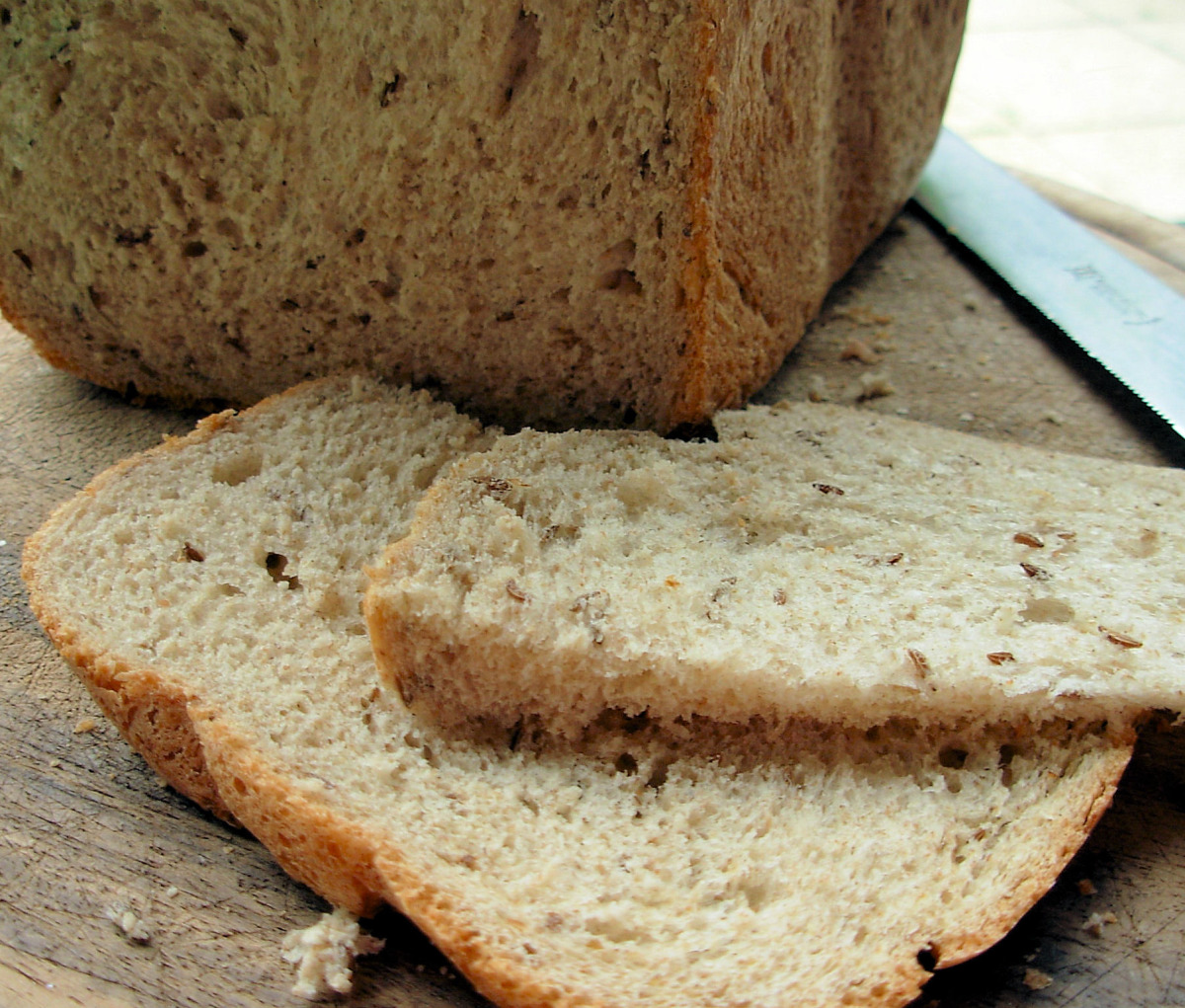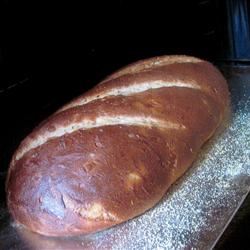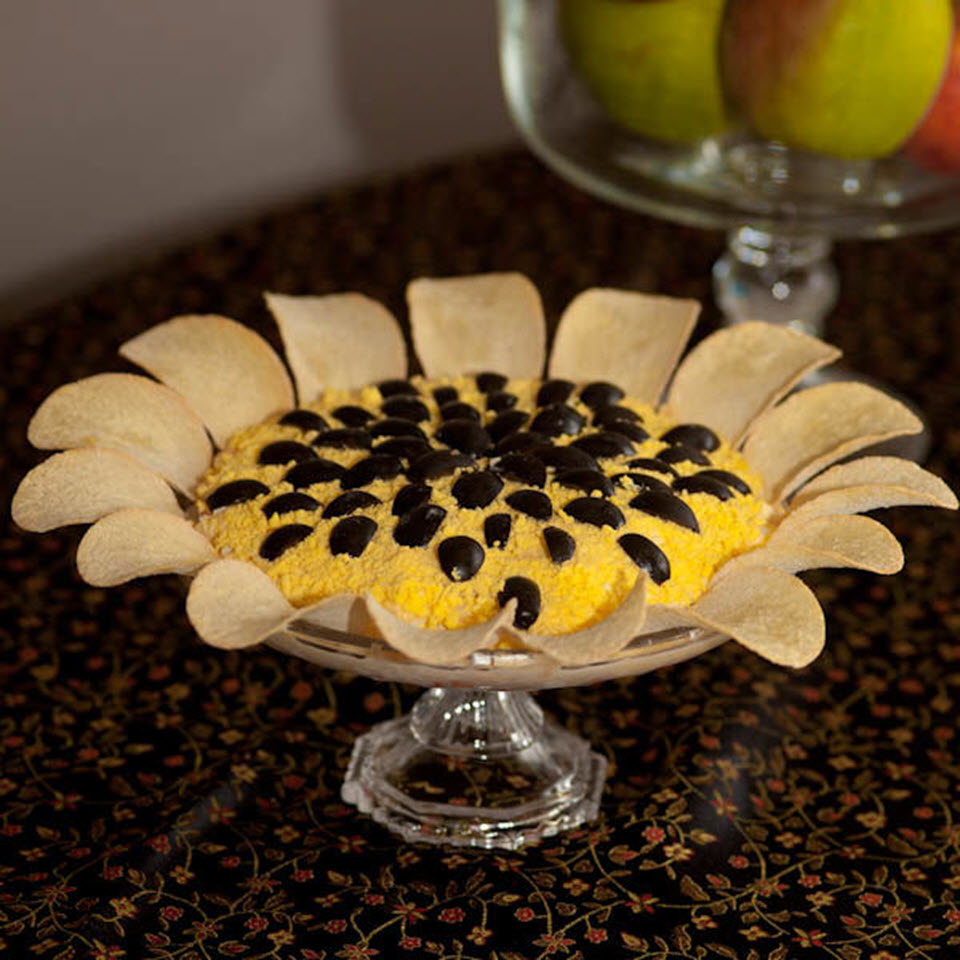Indulge in the delightful world of sourdough rye bread with caraway seeds, a symphony of flavors and textures that will tantalize your taste buds. This traditional bread, with its distinctive sour tang and aromatic caraway seeds, has been a staple in many cultures for centuries. With the help of our comprehensive guide, you'll embark on a culinary journey to create this masterpiece in your own kitchen. Dive into the details of our sourdough starter, master the art of kneading and shaping, and discover the secrets of achieving that perfect golden-brown crust. Elevate your baking skills by experimenting with our variations, including a gluten-free option for those with dietary restrictions. So, gather your ingredients, don your apron, and let's embark on this sourdough adventure together.
Let's cook with our recipes!
SOURDOUGH RYE WITH CARAWAY SEEDS

Provided by Food Network
Time 10h20m
Yield Yield: 2 long 12-inch loaves
Number Of Ingredients 10
Steps:
- Combine the starter and water in a 6-quart bowl. Break up the starter well with a wooden spoon and stir until it loosens and the mixture is slightly frothy. Add the rye flour and stir until well combined. Add the whole wheat flour, salt, caraway seeds, and just enough of the bran flour to make a thick mass that is difficult to stir. Turn out onto a well-floured surface and knead, adding remaining flour when needed, until dough is soft and smooth, 15 to 17 minutes, or make in a heavy-duty mixer. All finished rye doughs will remain slightly sticky. Be cautious about adding too much flour when kneading. The dough is ready when a little pulled from the mass springs back quickly.
- Shape the dough into a ball and let it rest on a lightly floured surface while you scrape, clean, and lightly oil the large bowl. Place the dough in the bowl and turn once to coat with oil. Take the dough's temperature (ideal temperature is 78 degrees). Cover with a clean damp towel or plastic wrap and place in a moderately warm (74 to 80 degrees) draft free place until doubled in volume.
- Deflate the dough by pushing down in the center and pulling up on the sides. Transfer the dough to a lightly floured work surface and knead briefly. Cut into 2 equal pieces. Flatten each with the heel of your hand. Shape each piece into a 12-inch log for long loaves.
- Using 2 well-floured towels and wood blocks, make a couche* in a moderately warm draft-free place. Place the loaves seam side up the couche. Cover with a clean damp towel or plastic wrap and let proof until almost doubled in volume, or until a slight indentation remains when the dough is pressed with the fingertip.
- Preheat the oven and baking stone on the center rack of the oven to 450 degrees, 45 minutes to 1 hour before baking. The oven rack must be in the center of the oven. If it is in the lower 1/3 of the oven the bottom of the breads may burn, and if it is in the upper 1/3, the top crusts may burn. Gently slip the loaves from the couche onto a well-floured peel so that they are right side up. Using a very sharp, serrated knife or a single-edged razor blade, score the loaves by making quick shallow cuts 1/4 to 1/2-inch deep along the surface.
- Using the peel, slide the loaves onto the hearth. Quickly spray the inner walls and floor of the oven with cold water from a spritzer bottle. If there's an electric light bulb in the oven, avoid spraying it directly?it may burst. Spray for several seconds until steam has filled the oven. Quickly close the door to trap the steam and bake 3 minutes. Spray again in the same way, closing the door immediately so that steam doesn't escape. Bake until loaves begin to color, about 20 minutes. Reduce the heat to 375 degrees and bake until loaves are a rich caramel color and the crusts are firm, another 15 to 20 minutes.
- To test the loaves for doneness, remove and hold the loaves upside down. Strike the bottoms firmly with your finger. If the sound is hollow, the breads are done. If it doesn't sound hollow, bake 5 minutes longer. Cool completely on wire racks.
- Note: If the dough temperature is higher than 78 degrees, put it in a cooler than (78 degree) place like the refrigerator, until the dough cools to 78 degrees. If it is lower than 78 degrees, put in it a warmer than 78 degree place until the dough warms to 78 degrees. The point is to try to keep the dough at 78 degrees during its fermentation. If you do have to move the dough, be gentle and don't jostle it, or the dough may deflate.
- *Couche?French for "couch" or "resting place". This is a simple holding device you make yourself for proofing long loaves like logs, torpedo shapes, and baguettes. Using well-floured canvas or linen towels create folds to separate loaves while hold them securely next to each other during proofing. Use a length of fabric at least a yard long. Place 12 to 16-inch wooden blocks cut from 2 by 4's at either long end to contain the loaves. Or substitute large books to contain the loaves.
- Place the chef in a tall 2 to 3-quart flat bottomed, round, clear plastic container with a tight fitting lid. Add the rye flour and spring water, and stir vigorously with a wooden spoon until the mixture becomes thick and pasty. Mark the level of the mixture on the side of the container with a black marking pen. Scrape down, cover tightly, and let stand in a moderately warm (74 to 80 degree) draft-free place until almost doubled in volume, 8 to 10 hours. The mixture will look light and spongy. You can observe the level of sourdough by using the black mark on the side of the container as an indicator. Do not let the sourdough ferment for longer than 10 hours, or the yeast may exhaust itself and the dough may not rise properly. The ripe chef has now produced 18 ounces of ripe sourdough, which you can use in any rye sourdough recipe.
- The Rye Chef: Day 1 1/2 cup (4 fluid ounces) spring water 2/3 cup (3 ounces) organic stone-ground rye flour, preferably medium ground
- In a tall 2 to 3-quart clear plastic container with a tight-fitting lid, stir together the water and flour. Scrape down the sides of the container with a rubber spatula. Cover tightly and put in moderate (74 to 80 degree) place for 24 hours.
- Day 2 1/2 cup (4 fluid ounces) spring water 2/3 cup (3 ounces) organic stone-ground rye flour, preferably medium ground
- Open the container. The young chef will probably show few signs of activity; the mixture will look like cardboard pulp. Don't worry! It's still a young chef. It will, however, have a sweet and musty smell and the beginnings of a tangy taste. Continue building the chef by adding the water and rye flour. Stir vigorously to bring fresh oxygen into the chef and distribute the fresh flour and water. Scrape down the sides, cover tightly and put in a moderate (74 to 80 degrees) place for another 24 hours.
- Day 3 1/2 cup (4 fluid ounces) spring water 2/3 cup (3 ounces) organic stone-ground rye flour, preferably medium ground
- The chef should have expanded noticeably. There should be bubbles on the surface. Taste it; it will have a pronounced sour taste and smell. Hold the container up and observe the large and small holes formed beneath the surface. Stir it with a wooden spoon; you should hear the faint crackle of gas bubbles popping. The chef is very much alive and maturing. Insert the spoon again and lift it up slowly. Short glutinous strands will stick to the spoon. Once again, nourish the chef by vigorously stirring in another addition of the spring water and rye flour. Scrape down the sides, cover tightly again, and return to its moderate-temperature place. Let stand for another 24 hours.
- Day 4 1/2 cup (4 fluid ounces) spring water 2/3 cup (3 ounces) organic stone-ground rye flour, preferably medium ground
- The chef is almost mature and ripe. It has expanded a great deal; maybe almost doubled in volume from Day 3, and it is very lively with bubbles and a well-developed cellular structure. You will see a honeycomb of large and small holes through the clear plastic container. Taste and smell the chef; it is pungent and unmistakably tangy, sour but not bitter. Nourish again with the last addition of spring water and rye flour, stirring vigorously. Using a black marker pen, mark the level of the chef on the side of the clear plastic container. Scrape down the sides, cover tightly, and let stand again in the same place for only 8 hours.
- If your chef was ripe, the mixture should almost double in volume. You can check its growth by comparing the height of the risen chef against the mark you made on the side of the container before the last rising.
- The chef is now ready to use to create your sourdough starter. If you are not going to make the starter immediately, refrigerate the chef in its tightly covered container for up to 3 days.
GERMAN COUNTRY STYLE SOURDOUGH RYE BREAD WITH CARAWAY SEEDS

When I lived in Germany I loved all the different types of breads that were on offer; so many different textures and flavours - lots of them with seeds, onions, cheese and grains. This has to be my all time favourite however - a light and slightly chewy sourdough rye bread with caraway seeds - the very essence of traditional German flavours! This bread has been adapted for the Bread Machine/Maker, and works EXTREMELY well when made this way. However, you can of course make it by hand in the more traditonal manner, as I like to do when I have lots of "bread making time"! This bread makes superb sandwiches and is perfect when served with soups, pates, cold meats, hams, corned beef, cheese and pickles. The "sponge" sourdough starter needs to ferment only overnight, making this a light style sourdough bread. This bread also keeps very well for up to 4 to 5 days.
Provided by French Tart
Categories Sourdough Breads
Time 15h
Yield 14 Slices - Medium Loaf
Number Of Ingredients 11
Steps:
- To make the sourdough Sponge.
- Mix all the ingredients together to make a smooth paste, cover with a tea towel and leave to ferment overnight at room temperature, for between 8 to 12 hours.
- To make the bread.
- When you are ready to make the bread, pour the water into the bucket, followed by all of the sourdough sponge and then add the caraway seeds.
- The add in this order: rye flour, salt, sugar and then the white bread flour.
- Finally sprinkle the dried yeast over the top and fit the bucket into the bread machine/maker.
- Set to the rapid wholemeal setting, for a medium sized loaf (750g) with the crust setting of your choice.
- Once the bread has cooked - take it carefully out of the bucket and leave to cool on a wire cooling rack. Remove the paddle if it is still in the bread before slicing.
- Serve with soups, hams, cold meats, cheese and pickles or make sandwiches of your choice.
ARTISAN SOURDOUGH RYE BREAD

This is my favorite rye bread recipe of all time... so far. I could have just as easily called it Swedish Rye Bread or Aroma Therapy Bread for that matter (takes the coveted baking bread smell to another level). Covers both sourdough and instant yeast versions.
Provided by Eric Rusch
Categories Recipes
Yield 1 Loaf
Number Of Ingredients 11
Steps:
- Sourdough Version
- In a mixing bowl, mix the starter into the water. Add the molasses, all the seeds and orange zest.
- In a separate bowl, combine the flours and salt.
- Gradually stir the dry ingredients into the wet using a dough whisk or spoon until the flour is well incorporated. Cover with plastic and let rest for 15 minutes. After about 15 minutes, mix again for a minute or two. Again let rest for 15 minutes and mix one more time as before. Now cover the bowl with plastic and let sit at room temperature for roughly 12-14 hours.
- Instant Yeast Version
- The only difference is don't use sourdough starter and instead mix the instant yeast into the dry ingredients before combining with the wet ingredients.
- Both Versions
- After the long 12-14 hour proof, stretch and fold the dough and shape into boule or batard (round or oblong) shape for baking. (If you didn't follow that, I'm afraid you're doomed to watch the video.) Cover again with plastic and let rest 15 minutes before putting in a proofing basket for the final rise. If you don't have a proofing basket, line a bowl with a well floured kitchen towel and put the dough in there for the final rise. The final rise should last somewhere between 1 to 1 1/2 hours. Keep the dough covered with plastic to prevent it from drying out.
- Preheat your oven to 475 F a half hour before baking.
- Score the dough with a razor or sharp serrated knife and bake until the internal temp is about 200 F.
- Let cool completely before eating.
SOURDOUGH RYE

This bread takes a bit of time, but your effort is repaid with two chewy, flavorful loaves.
Provided by JACLYN
Categories Bread Yeast Bread Recipes Whole Grain Bread Recipes Rye Bread
Time P1DT1h40m
Yield 24
Number Of Ingredients 13
Steps:
- The night before you want to bake the bread, feed your active sourdough starter with 1 cup rye flour, 1/2 cup bread flour, and 2/3 cup water. Mix until fully combined, cover, and let stand at room temperature overnight.
- The next morning, mix together the expanded starter and 1/4 cup water. Stir in 1 cup rye flour, 1 cup bread flour, salt, sugar, olive oil, and caraway seeds.
- Turn dough out onto a lightly floured surface, and knead until satiny. Place in a well oiled bowl, and turn once to oil the surface. Cover with a damp cloth. Allow to rise in a warm spot until doubled.
- Punch down dough, and shape into loaves. Place on a greased baking sheet or in greased loaf pans. Allow to rise until doubled in bulk.
- Preheat the oven to 350 degrees F (175 degrees C).
- Score the tops of the loaves with a serrated knife. Bake in preheated oven until deep brown and loaves sound hollow when thumped on the bottom, about 40 minutes.
- Alternate baking method for chewier, salty crust: Bake 20 minutes at 350 degrees F (175 degrees C). In a small bowl, mix together 1/2 cup water and 1 teaspoon salt. Remove loaves from oven and brush crust with salt water. Continue baking for 25 minutes more, brushing at 10 minute intervals.
Nutrition Facts : Calories 81.1 calories, Carbohydrate 15.8 g, Cholesterol 0.1 mg, Fat 0.9 g, Fiber 1.7 g, Protein 2.4 g, SaturatedFat 0.1 g, Sodium 245.4 mg, Sugar 0.9 g
SOURDOUGH RYE BREAD WITH CARAWAY

This is a strongly flavored rye bread, like from an "old country" bakery. I was forced to experiment and find a recipe when my favorite ethnic bakery closed and I could no longer buy my favorite sourdough rye bread. I hope I've done it justice. Start the day before you want the bread -- the sour flavor develops best if allowed a slow rise in the refrigerator.
Provided by Susiecat too
Categories Sourdough Breads
Time 1h15m
Yield 2 loaves, 24 serving(s)
Number Of Ingredients 7
Steps:
- Mix sourdough starter with warm water with a whisk until thoroughly combined.
- Add rye flour a little bit at a time, incorporating well before each addition.
- Add bread flour in the same way, first in the mixing bowl and then turned out on to a floured surface while kneading, until you get a uniformly elastic ball of dough that is tacky but not sticky. This may take about 10 minutes.
- Make a hole into the center of the dough and add the salt and caraway seed, and continue kneading another 5 minutes or so, until the seeds are dispersed throughout the bread dough.
- Coat a bowl with a thin layer of canola oil, add the dough and roll the dough around until all sides are covered with oil. Cover well, and refrigerate for 24 hours.
- Punch down dough, cut in half and form loaves.
- Leave out on a warm counter, covered, to rise until doubled in size. The length of time will depend on the vigor of your starter, but this may take a few hours.
- Preheat oven to 350°F.
- Bake for 30 - 35 minutes, bread will appear lightly browned.
- Cool on racks.
- Freezes well.
Tips:
- To achieve the best flavor and texture, use a sourdough starter that is active and well-maintained.
- Make sure to use rye flour that is finely ground, as this will help create a smooth and even crumb.
- If you don't have caraway seeds, you can substitute them with other seeds, such as fennel seeds or coriander seeds.
- For a crispier crust, place a Dutch oven or baking sheet filled with water on the bottom rack of your oven while baking the bread.
- Allow the bread to cool completely before slicing it. This will help prevent the bread from crumbling.
Conclusion:
This sourdough rye bread with caraway is a delicious and hearty bread that is perfect for any occasion. It is easy to make, and the results are well worth the effort. With its slightly sour flavor and chewy texture, this bread is sure to become a favorite in your household.
Are you curently on diet or you just want to control your food's nutritions, ingredients? We will help you find recipes by cooking method, nutrition, ingredients...
Check it out »
#time-to-make #course #cuisine #preparation #for-large-groups #sourdough #breads #european #kosher #vegan #vegetarian #dietary #yeast #number-of-servings #4-hours-or-less
You'll also love








